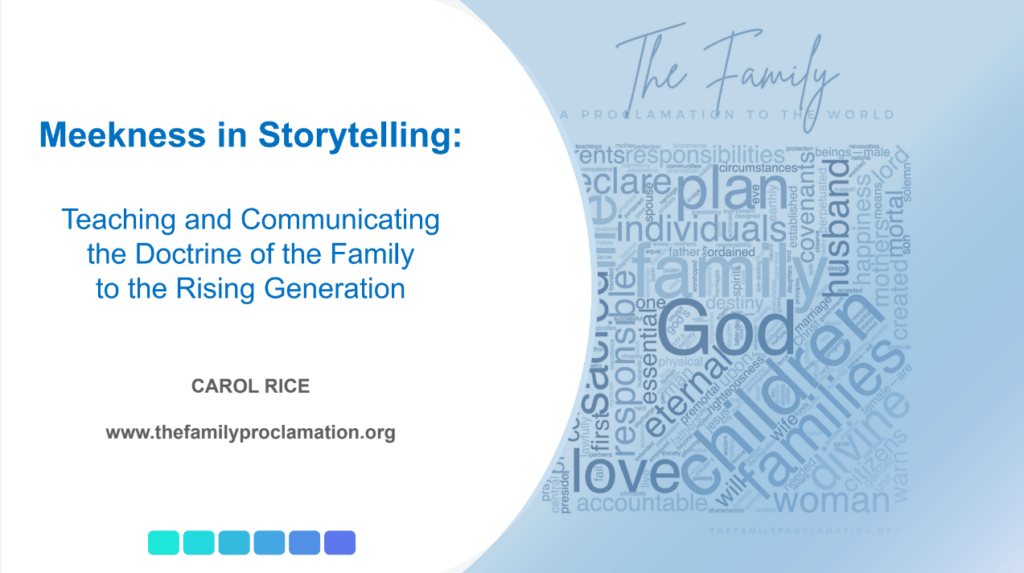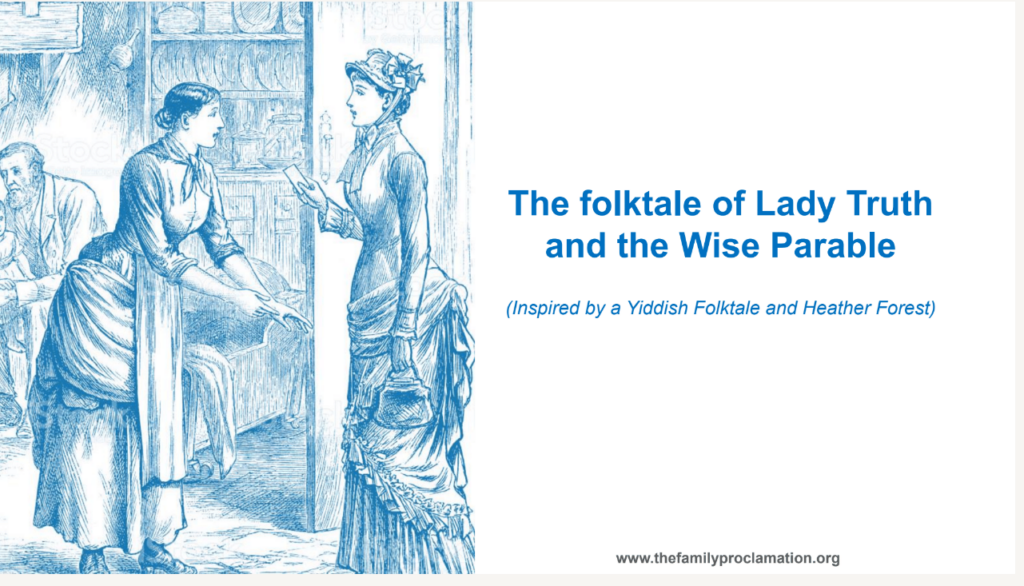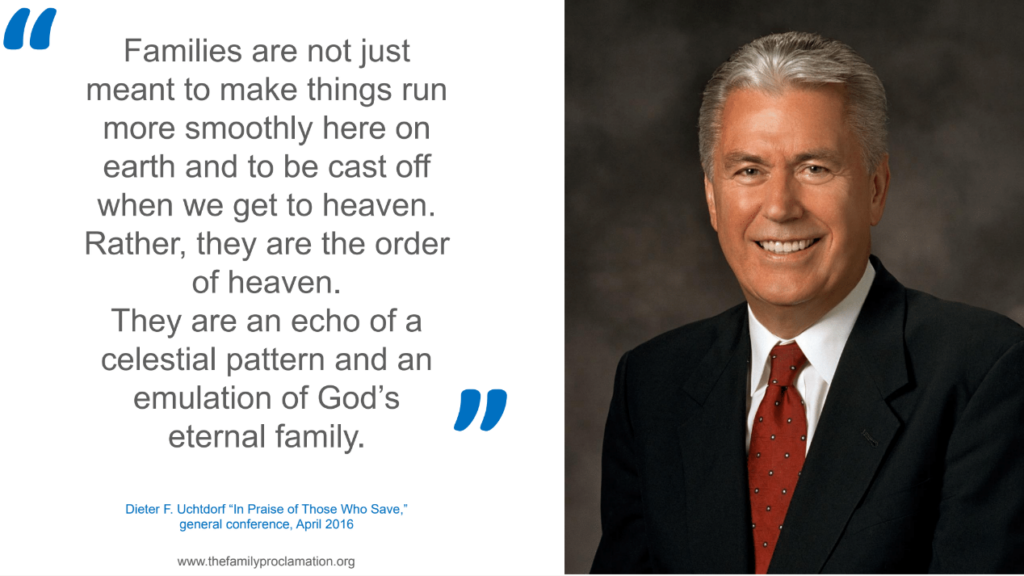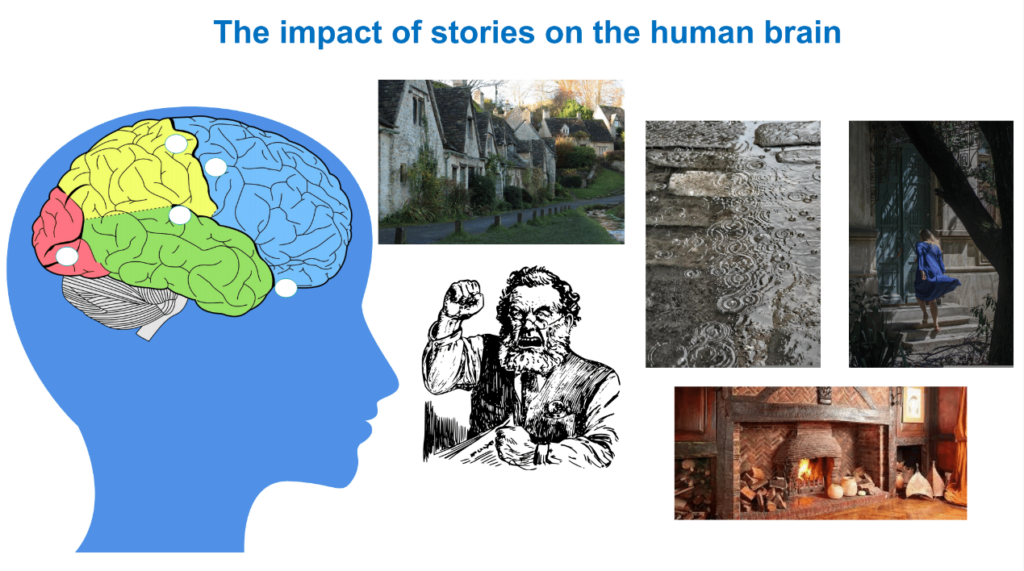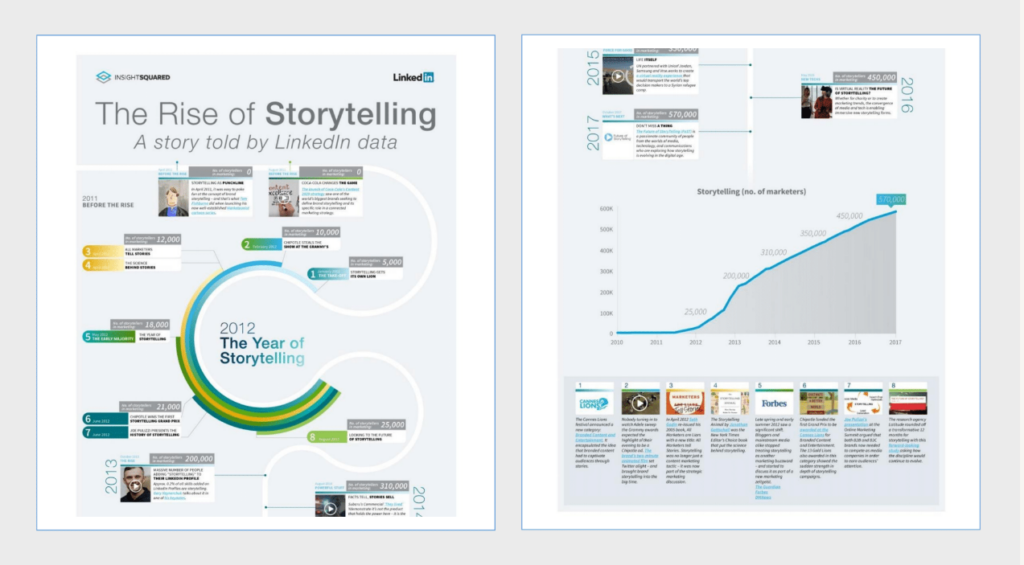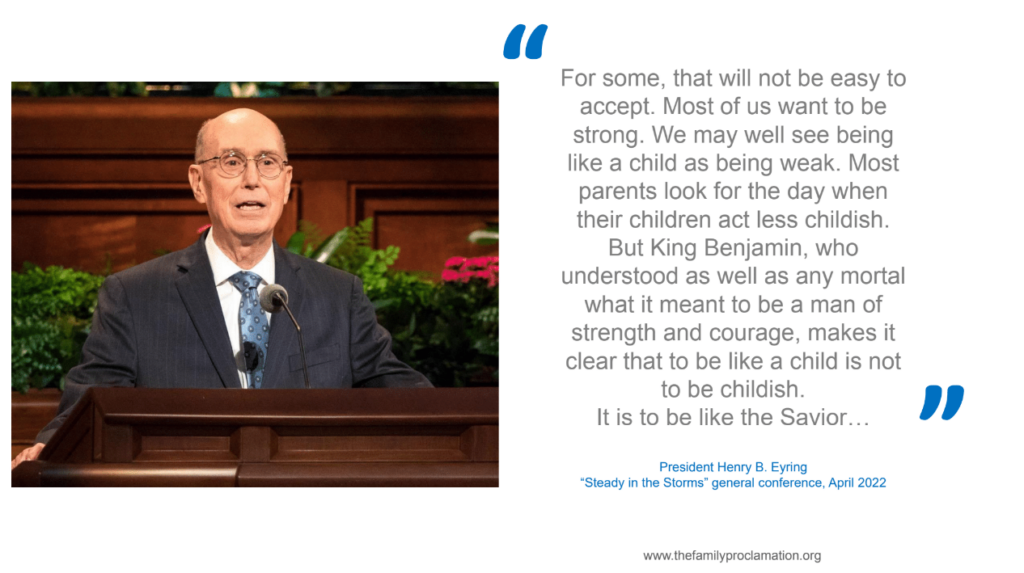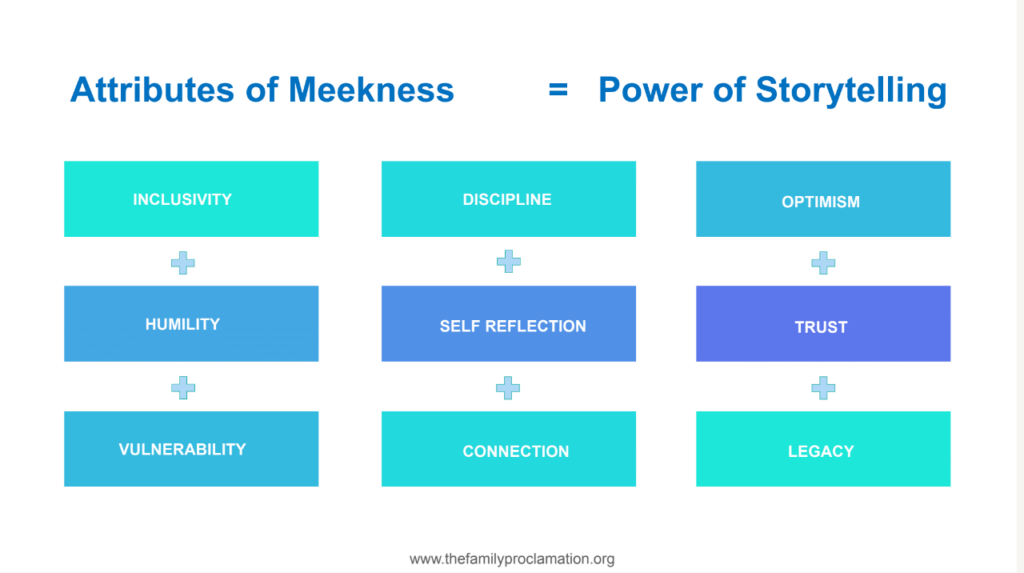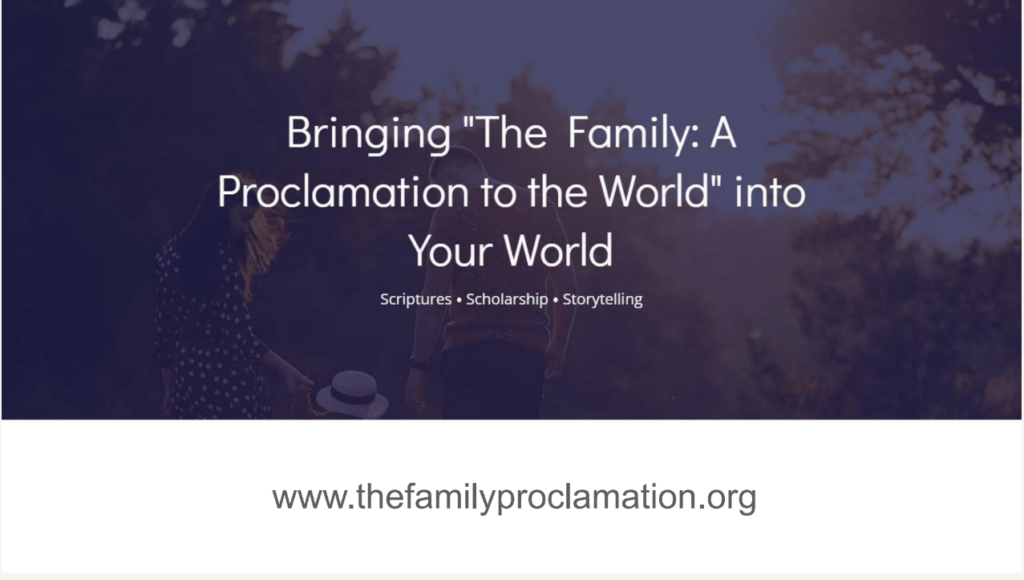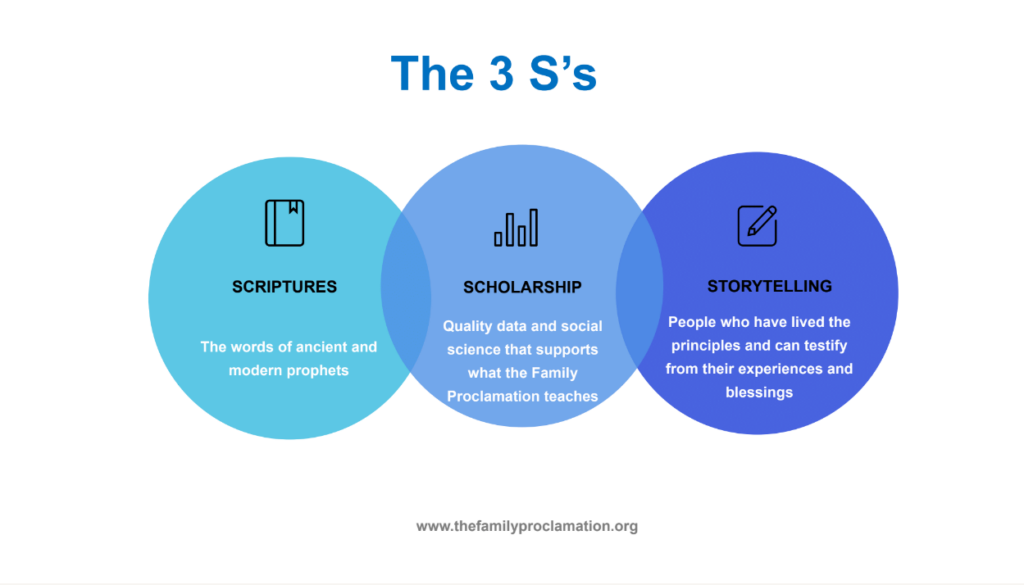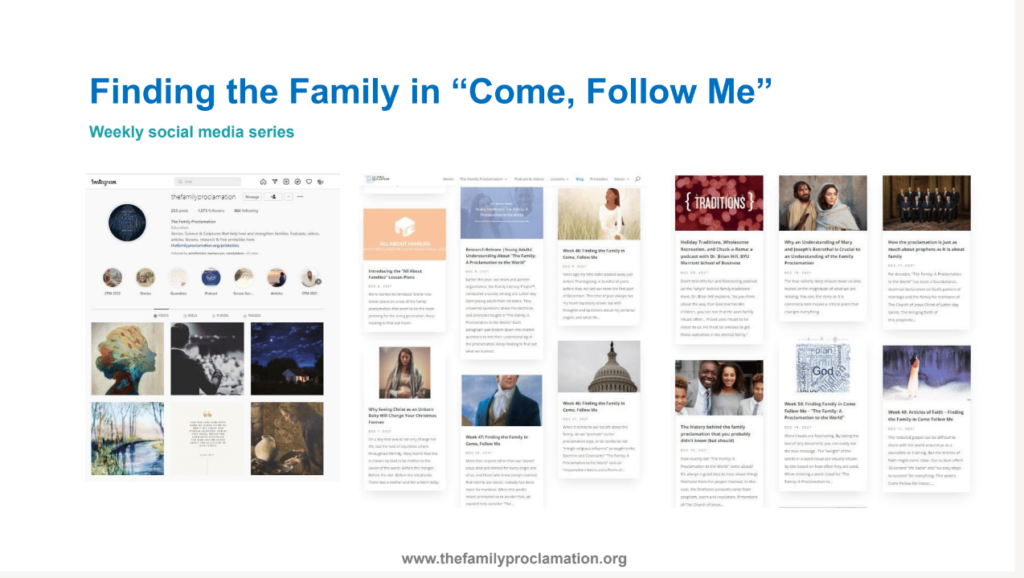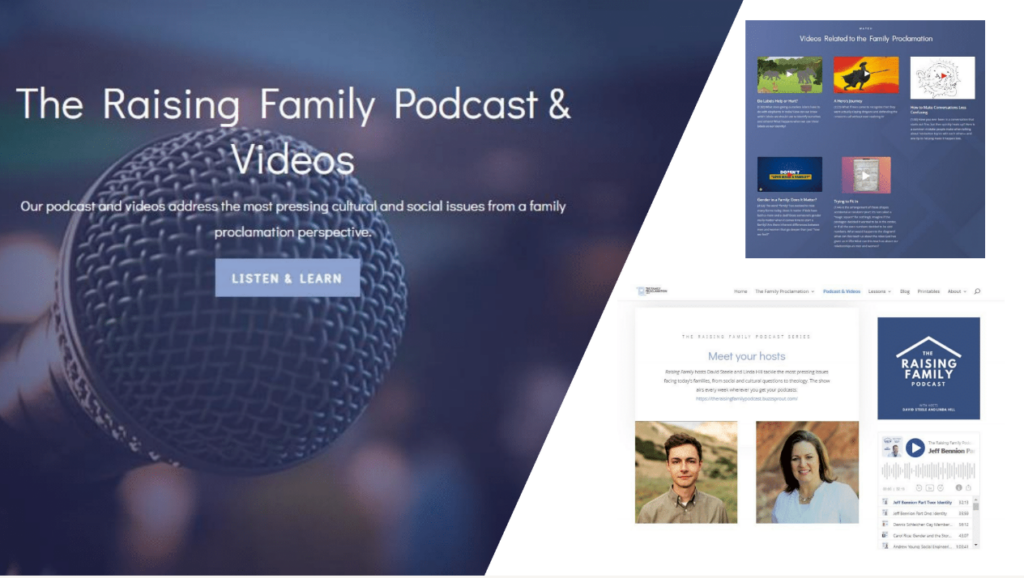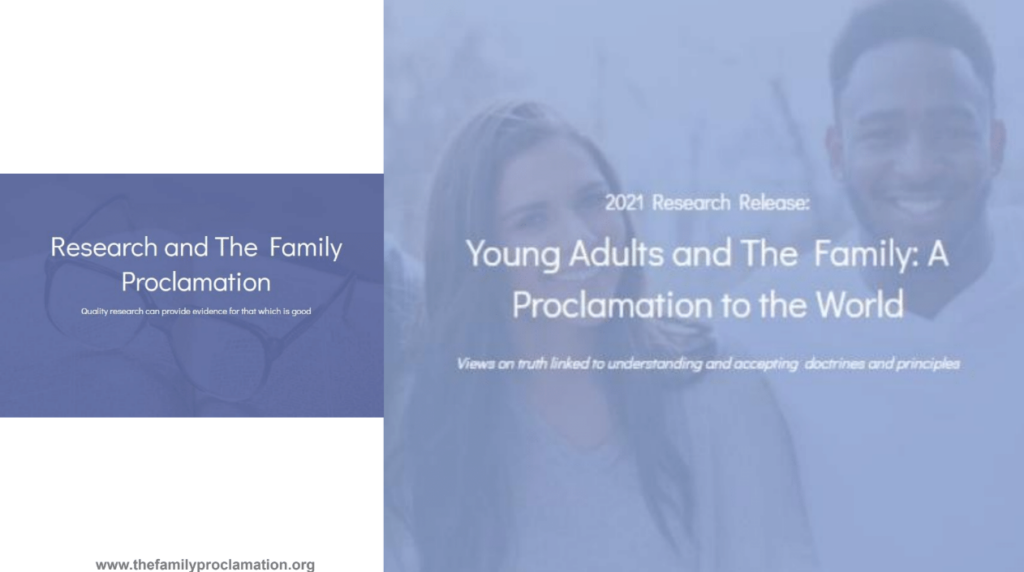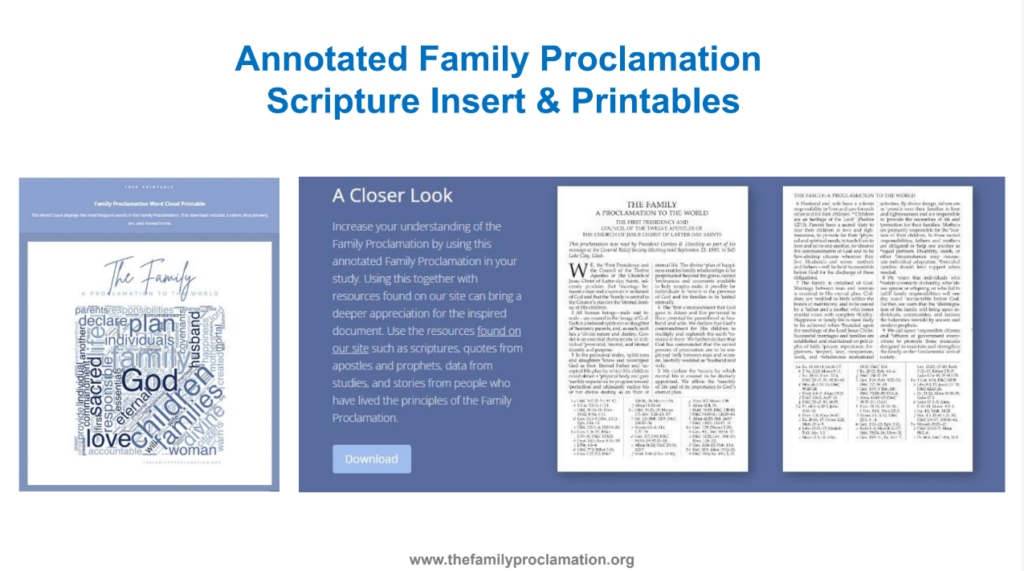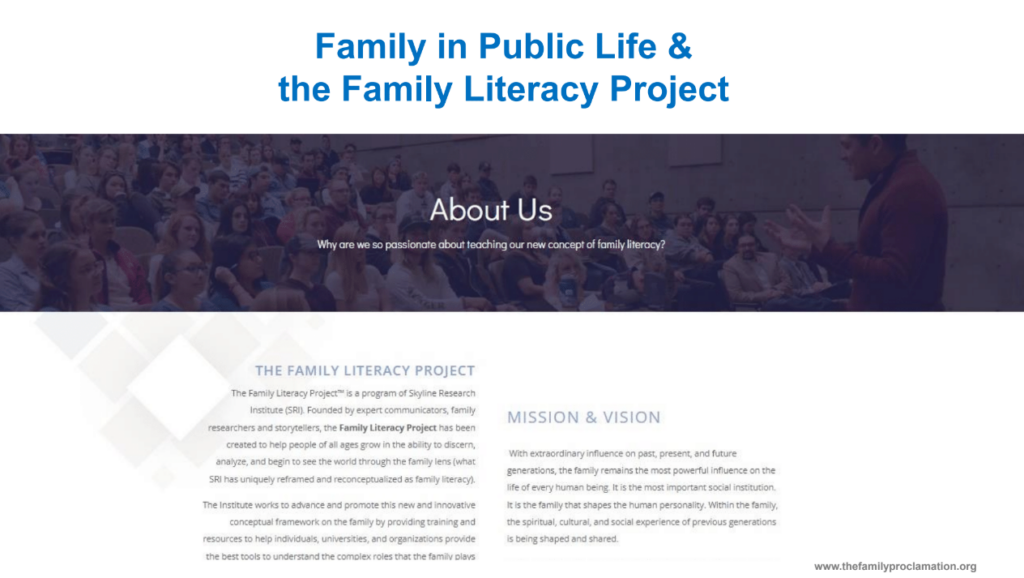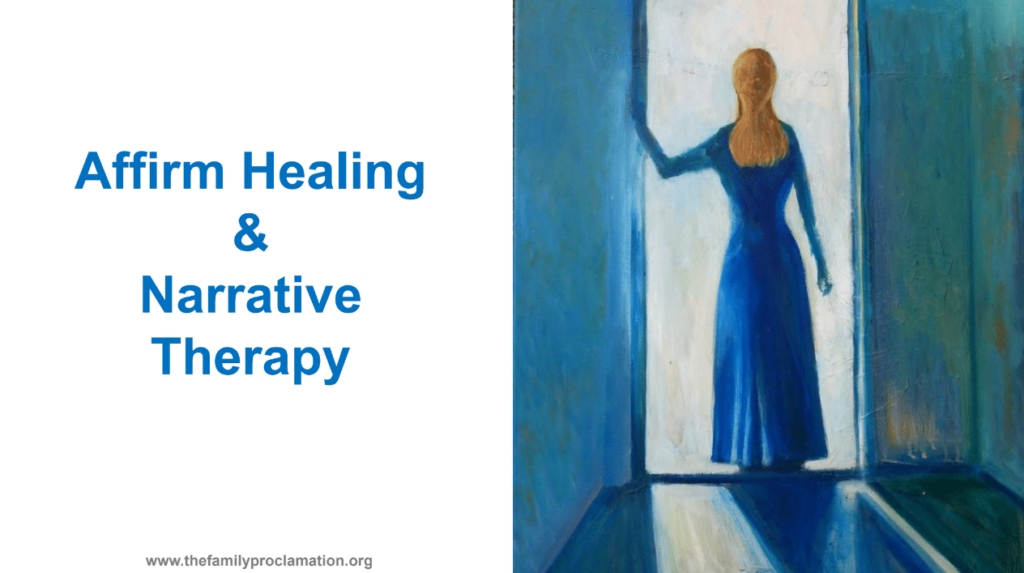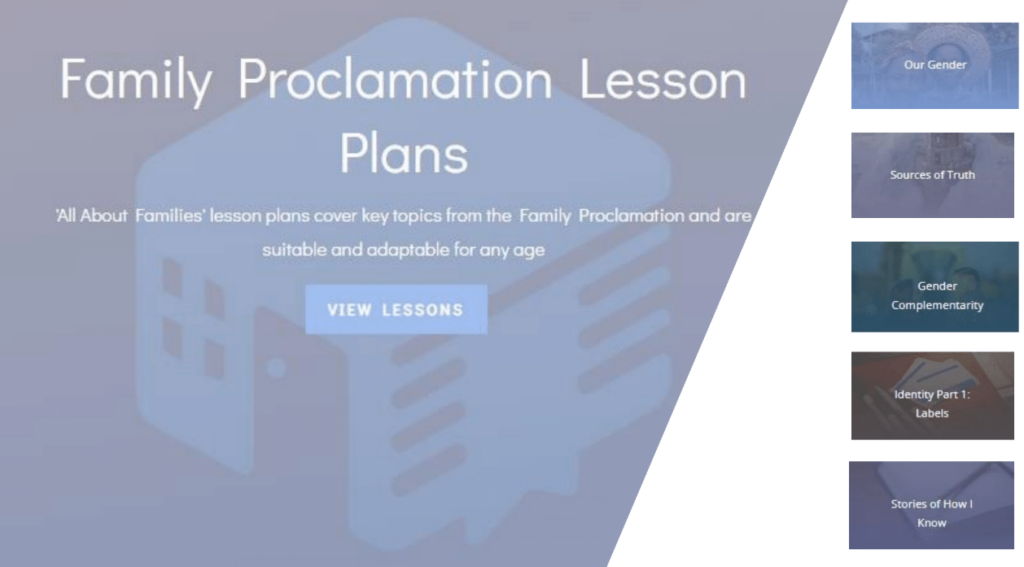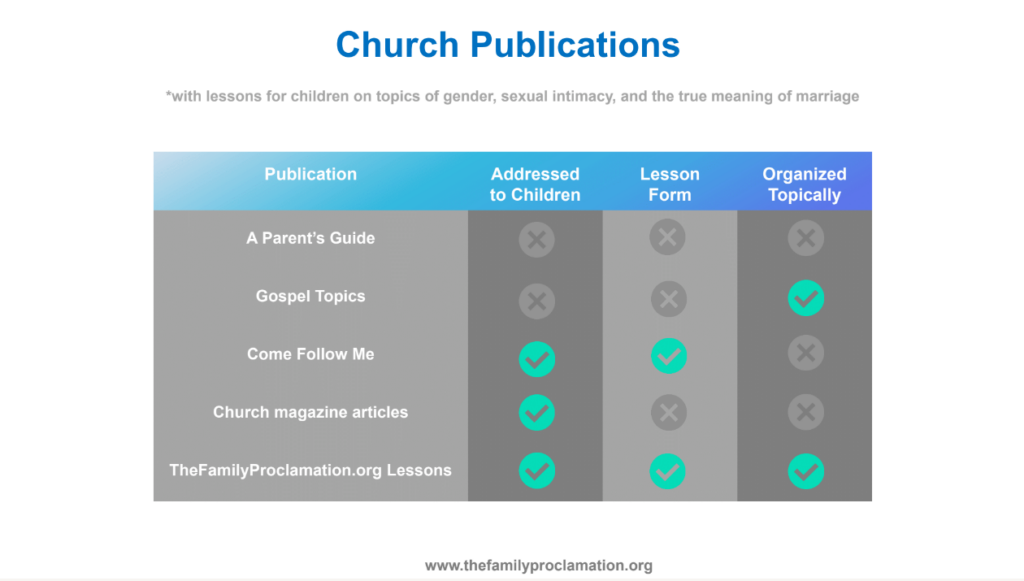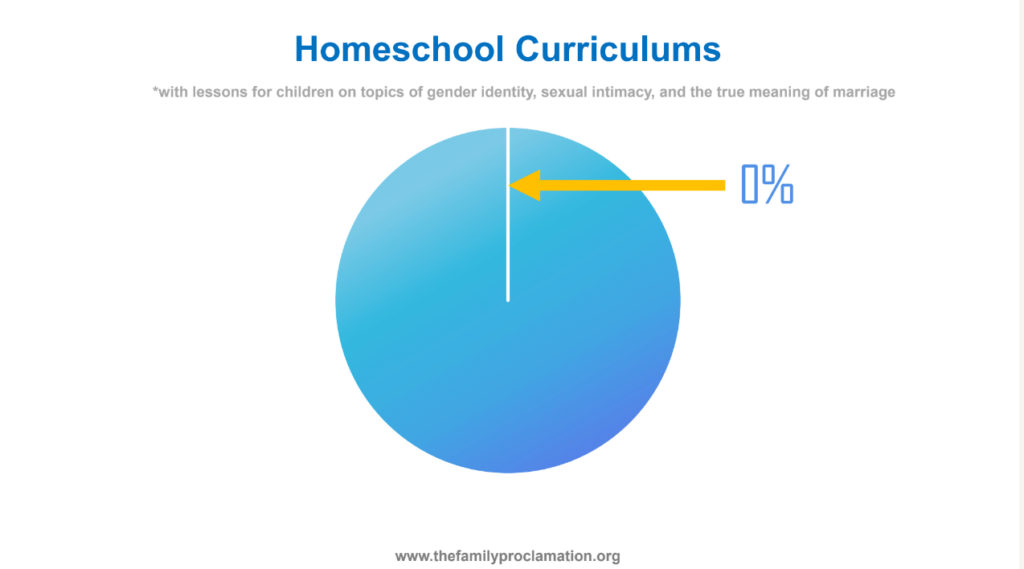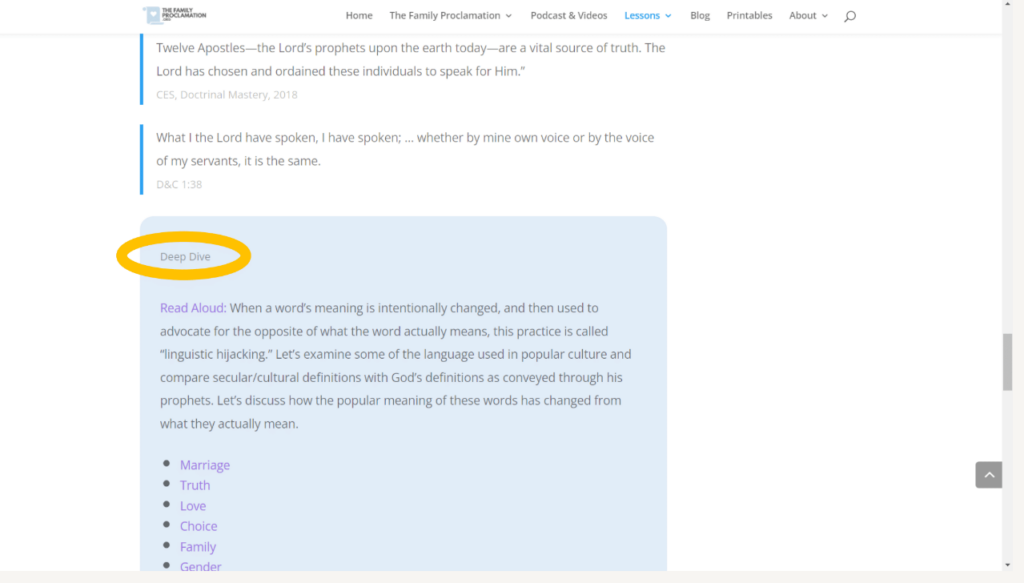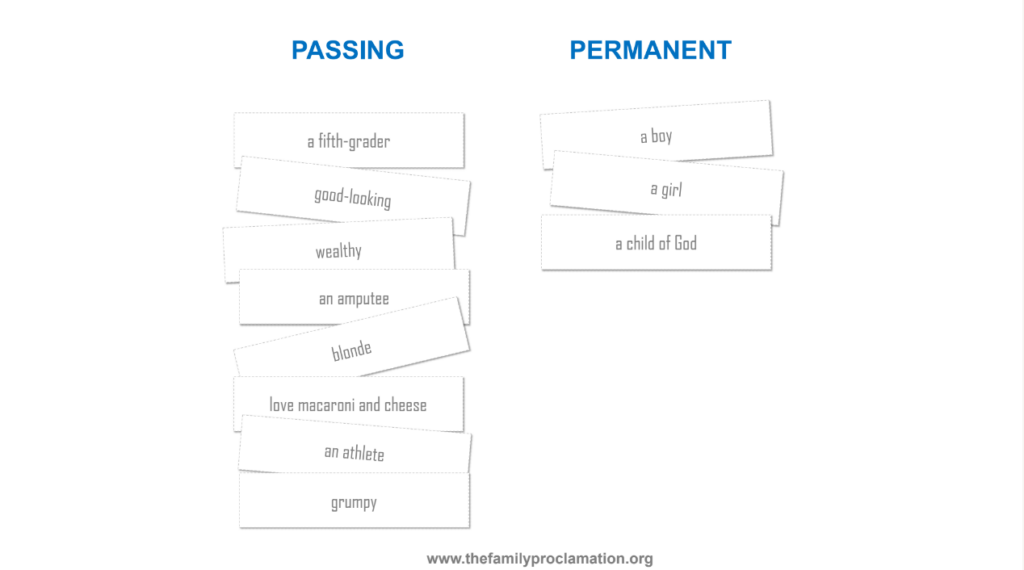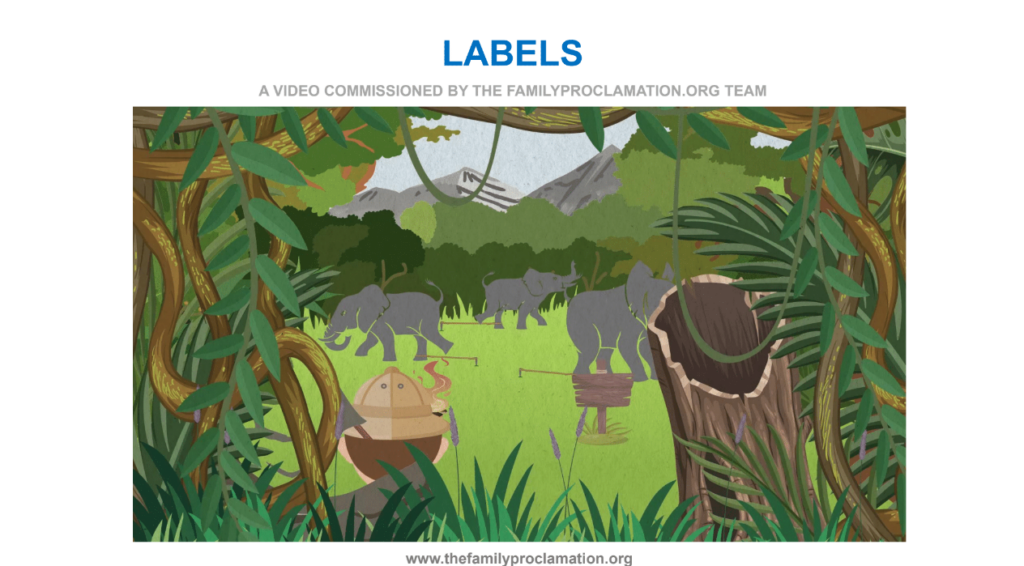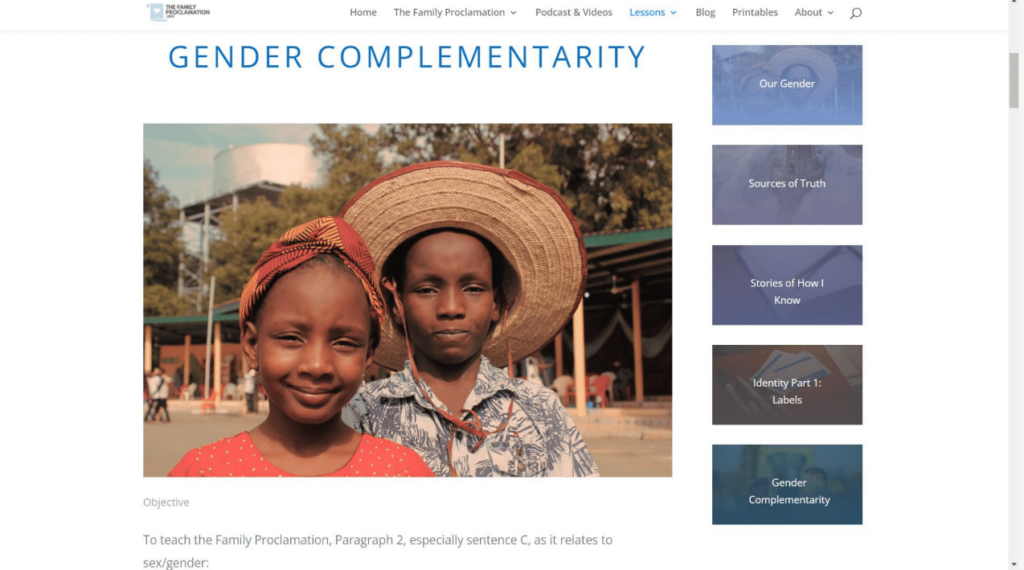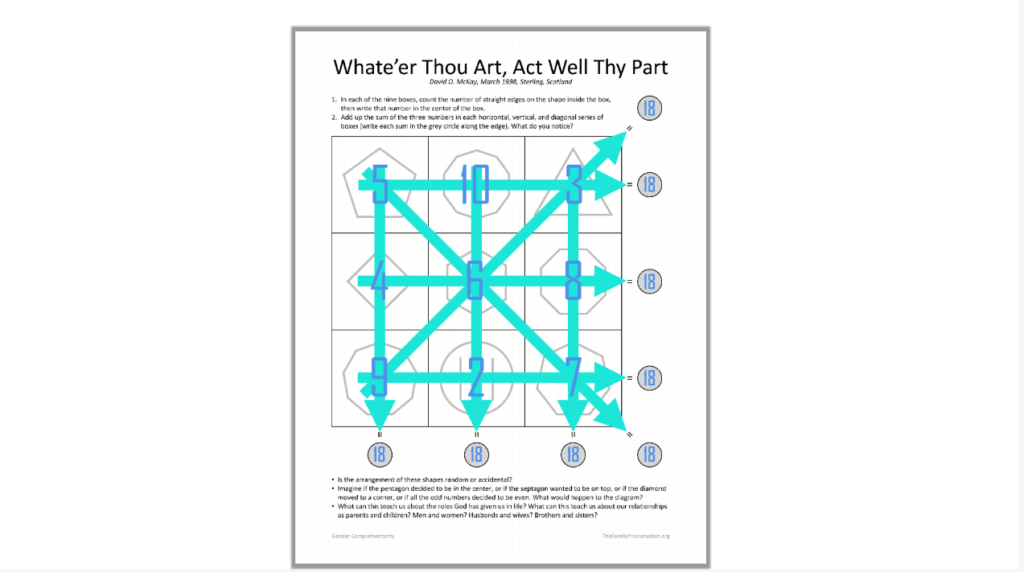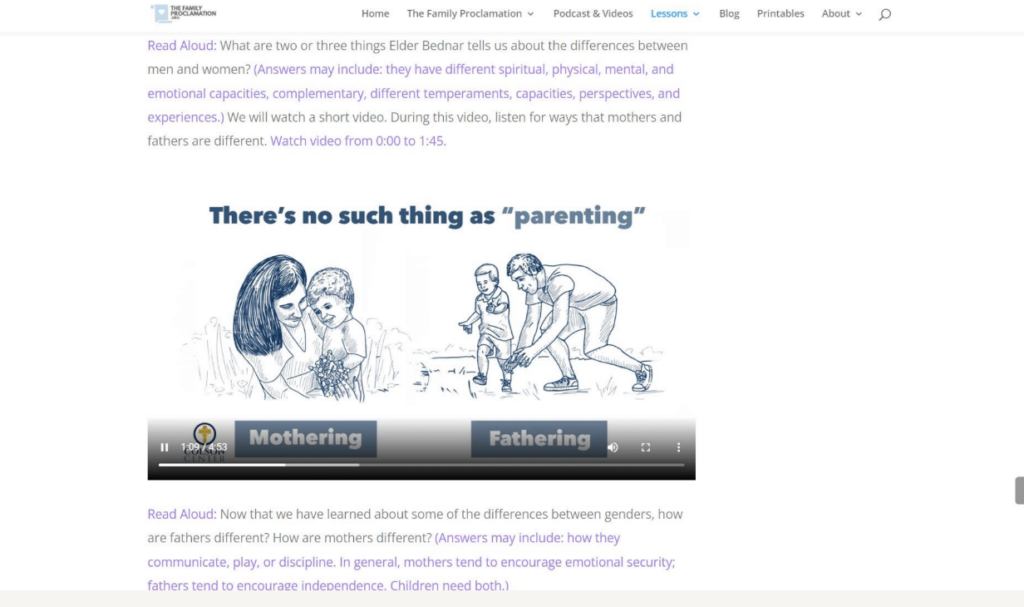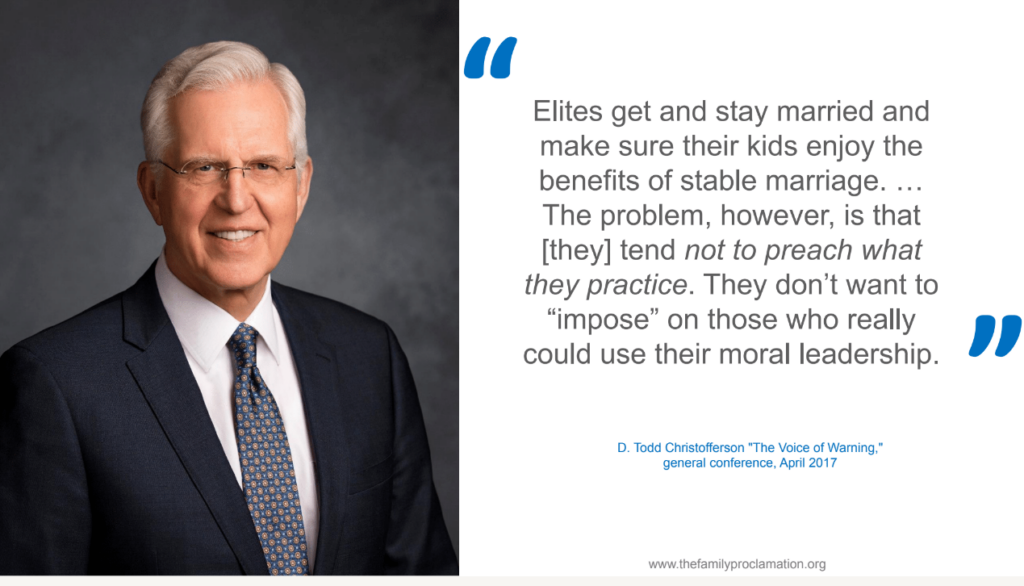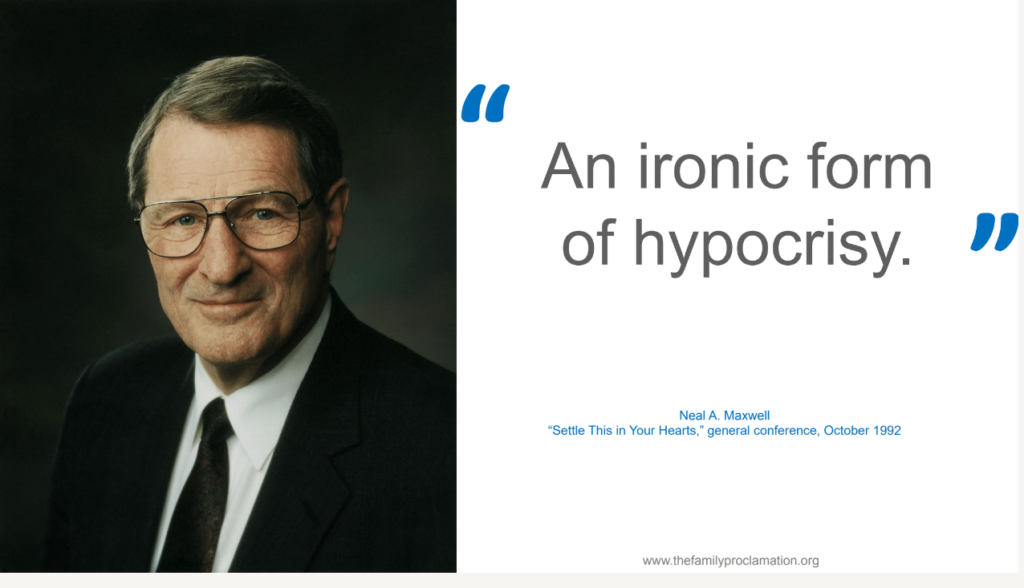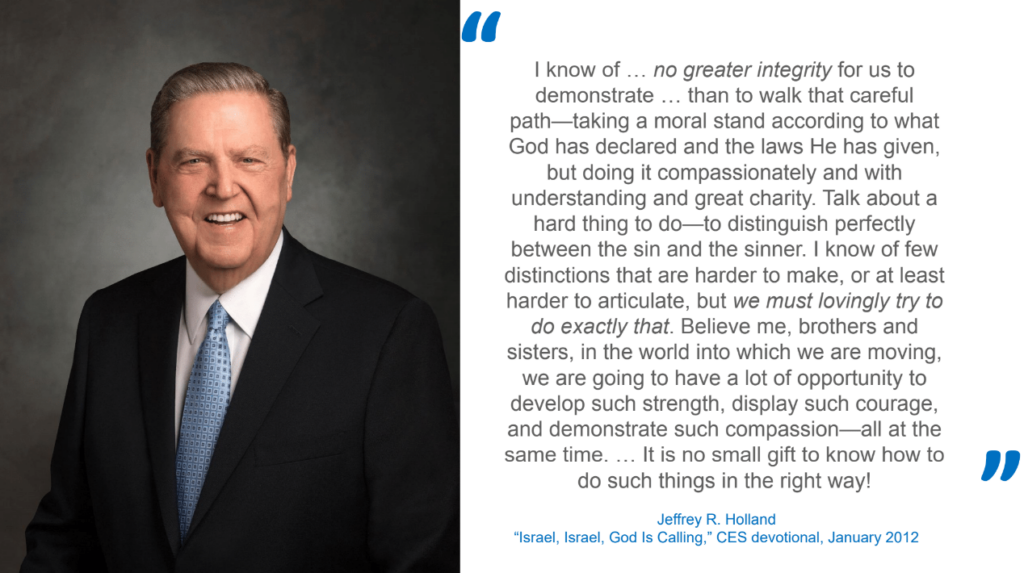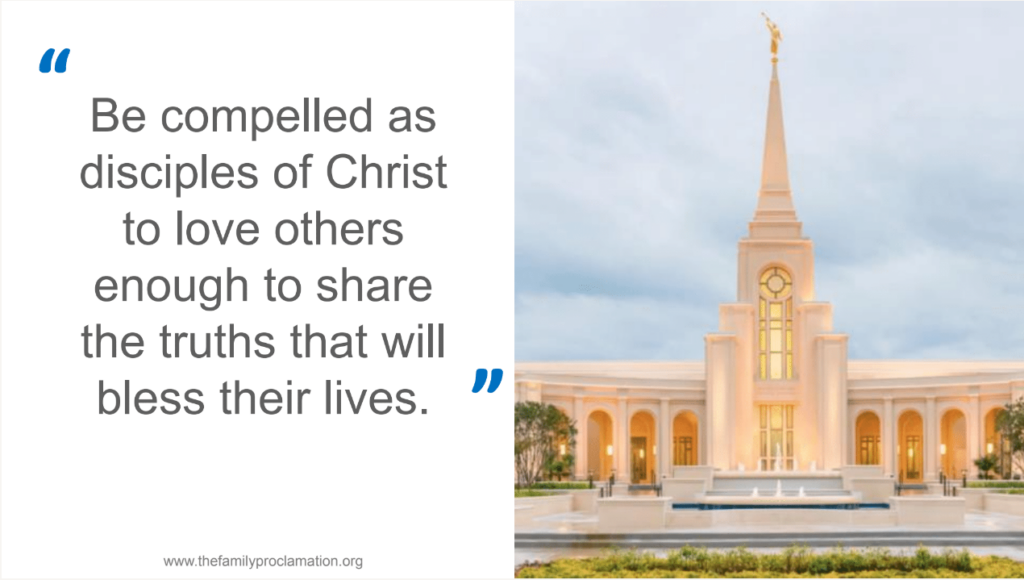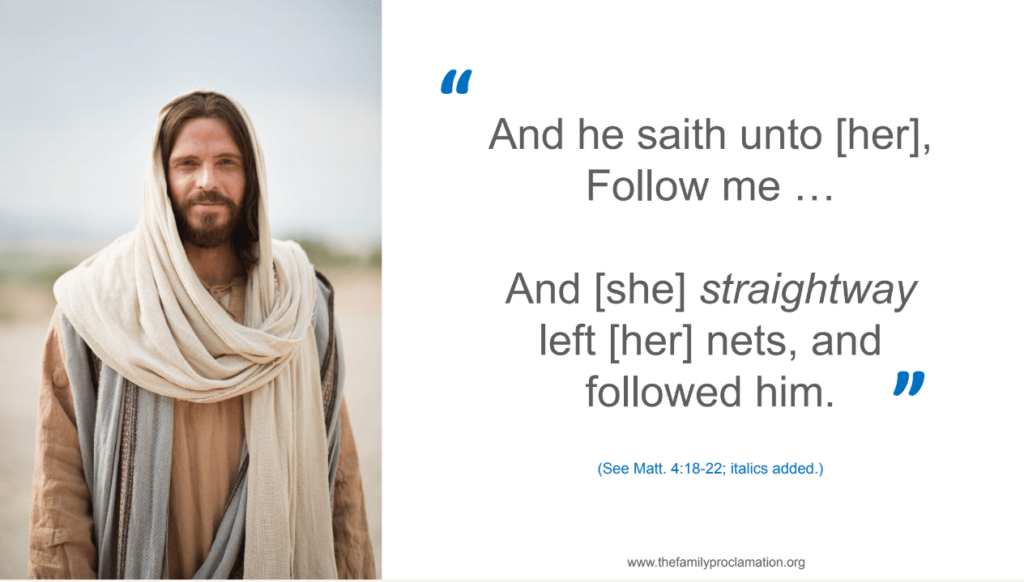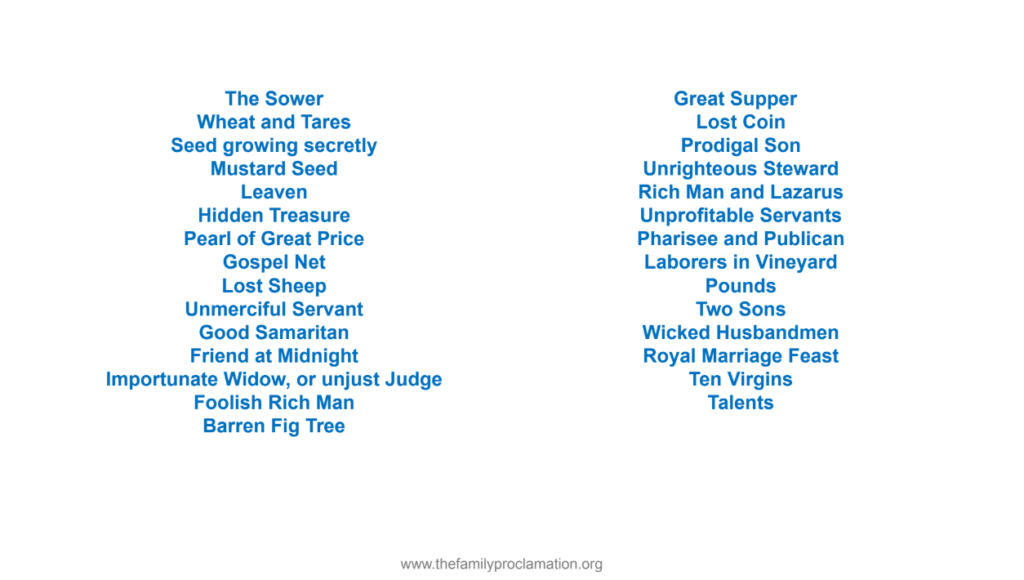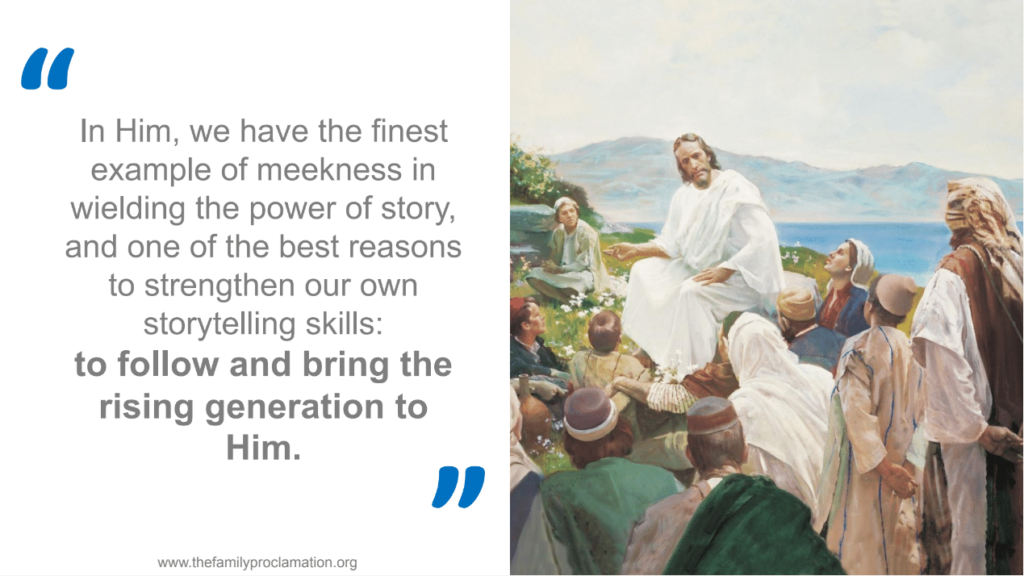Carol Rice discusses the importance of teaching family doctrine to the rising generation in a way that resonates with them, especially as they increasingly disengage from faith communities. She emphasizes the family’s central role within Church theology, likening it to an “order of Heaven,” and highlights storytelling as a powerful medium for communicating complex doctrines in relatable ways. She introduces the FamilyProclamation.org initiative, which provides lesson plans and resources to help parents and educators address sensitive topics with compassion and clarity.
This talk was given at the 2022 FAIR Conference on August 4, 2022.

Carol Rice calls on her extensive experience in storytelling and advocacy to enhance communication strategies for teaching family doctrine.
Transcript
Carol Rice
Introduction
Our speaker is Carol Rice. She’s the President of Skyline Research Institute and the Director of Communications for Public Square magazine, a joint project for the Elizabeth McCune and John A Widtsoe Foundation. As a Communication Marketing and Outreach Director over the past two decades, she’s provided specialized communication and messaging training for non-profits and non-governmental organizations, including at the United Nations. She has worked extensively with prestigious storytelling organizations, including the Timpanogos Storytelling Institute, the National Storytelling Network, and the International Storytelling Center. Carol earned a BA in Marriage and Family Relations with an emphasis in Family Advocacy from BYU-Idaho, and she and her husband, Scott, live in Alpine, Utah.
Additional Speakers
Now, before I go on, Carol is also going to be joined by two additional people, and she will be introducing them. But I wanted to give you some background on who they are. Jelaire Richardson is a blogger and homeschooling mom of six who currently lives in the Middle East. I teased her that the only reason she came here was to come to the FAIR conference. I’m sure that’s the case. She’s spoken at BYUI Education Week, the Middle East Women’s Conference, and various local and regional events on topics related to women, youth, and interfaith relations. Her famous pastime is attending other churches’ worship services with her family in addition to their own LDS congregation. She earned a BS in Sociology from BYU-Idaho and a Master’s in Social Work from BYU. Prior to starting her family, she worked as a therapist for teens with substance abuse addictions, and she and her husband are currently working on projects for the familyproclamation.org.
Nathan Richardson is a speech-language pathologist and has published multiple peer-reviewed articles in academic journals. He’s also a book designer and has worked for multiple publishing houses, including the BYU Religious Studies Center, as well as owning his own document design business. He’s a frequent speaker at BYU-Idaho Education Week and received a Bachelor’s degree in English and a Master’s degree in Communication Disorders from BYU. He works for a private family in the Middle East.
With that, we’ll turn the time over to Carol Rice.
Presentation
I asked him if they could make me look about a foot taller. They said that wasn’t possible. I’m excited to be here with you.
She had been turned away from every door on the street, yet bravely approached each new home with hope, only to be met with anger, hostility, aggression. “How dare you!” one man bellowed. Sometimes she actually saw fear in the eyes of those who rejected her. If a child happened to open the door, they would sometimes be a little more gentle, but they would be a little embarrassed or shocked all the same. Even when quieting her eagerness and mustering a smile, rejection remained the result. As determined as she was, it was getting dark and it was cold. She knew from the musty smell of the saturated cement and the drenched dirt from the storm that it was going to last for hours.
When the old woman found her, she was huddled under a tree, shivering and hungry. Taking pity on her, the old woman gathered her up and took her home to warm her by the fire.
“Why do they turn me away?” the young woman wept.
“I was once like you,” the old woman whispered. “Let me show you.”
Wise Parable then layered Lady Truth in stories’ fine attire. She dressed her up with metaphor, poignant praise and plots to inspire. Hand in hand, they ventured out to spin a mighty tale, with laughter, tears, and treasures, now ready to unveil. Clothed in story, truth knocked again, to find herself now welcomed in.
That’s inspired by a Yiddish folktale and a poet named Heather Forrest, and it reminds me that the rising generation is coming of age in a world accustomed to turning away truth. They need our wisdom, our parables, and our stories of faith. They have unique challenges, and the stakes could not be higher.
Young Adults and Faith
Barna research reveals that young adults leaving faith has increased from 58 to 64 percent. In the U.S. nearly two-thirds of 18 to 29-year-olds who grew up active in church have withdrawn. Another study showed between 50 and 88 percent of those teens are leaving the church by the end of their first year of college. Although other research also shows that this departure from the church happens before they hit college. College is simply the release point of freedom from the faith of their parents. Either way, the point being they are leaving the faith younger and in higher numbers than ever before.
In a world where a 10-minute YouTube TED Talk makes everyone an expert, orthodoxy and brilliance would seemingly be obsolete. But I believe we need it more than ever. It just needs to be repackaged. My message is one of confidence in our ability to meet the challenge.
Two Things to Understand
To that end, I believe we need to understand deeply two things: first, why the doctrine of the family is essential, which Brent did a beautiful job talking about, and second, meekness. We can teach in a way that is accessible to all, virtually stepping off of our academic platforms and, in effect, reaching around the podium to meet these children, youth, and young adults face to face and heart to heart.
First, on the centrality of the family within our theology, there is much that testifies of this. At thefamilyproclamation.org, every paragraph, every sentence of “The Family: A Proclamation to the World” is annotated with support from scripture, scholarship, and story. Personally, I love Elder Dieter F. Uchtdorf’s simple but profound explanation of the family’s relevance.
He says,
Families are not just meant to make things run more smoothly here on Earth and to be cast off when we get to heaven; rather, they are the order of Heaven. They are an echo of a Celestial pattern and an emulation of God’s Eternal family.”
In a world that increasingly seeks to obscure this Celestial pattern, in my work, I’ve discovered a method that I’m excited to share with you today.
The Impact of Stories on the Brain
When we hear a story like the folktale of Lady Truth and Wise Parable, we retain about 70% of the information. If that same information is shared in statistics alone, we’re going to remember about 5% — a 65% difference. When sharing statistical information, there are two parts of our brain.
I’m not a neuroscientist, so this is going to be a very simple explanation, but there are two parts of our brain. When we hear statistical information, the wernicke and broca areas light up. However, when sharing a story, something very different happens. Areas within every lobe of the brain become activated: the visual cortex activates as you see the street, the olfactory cortex smells the wet concrete, the auditory hears the angry voices, the motor cortex runs from door to door, the sensory cortex feels the warmth of a fire and draped layers of cloth, and finally, the cerebellum is activated because we all know rejection and acceptance.
We experience the story in our minds and respond physically as though we’re actually living it. What an incredibly powerful way to plant a seed of faith.
The power of this has caught the attention of many disciplines and fields of study. As a narrative coach, I’ve spent my career in a few of them, mostly marketing and outreach.
Storytelling as a Skill
LinkedIn reports that in August of 2011, there were a minuscule number of us that listed storytelling as a skill — less than 10. Within a 12-month period from August 2011 to August 2012, momentum shifted, resulting in 25,000 marketers listing it in their profiles. The change in just one year was remarkable, and now, in barely more than a decade, storytelling has become and remains a significant marketing discipline and continues to rise. In March of this year, storytelling was listed by Corporate Inc. as the most in-demand skill for marketers.
Seth Godin, author and leader in the discipline, said, “As a marketer, telling a story involves a deep understanding of your audience and their emotions that enables you to craft a narrative that appeals on a deeply human level.”
A Personal Example
I recall a time when our family was sitting at a dinner table and having dinner. I was trying to convince my teenage son to eat a tomato. It’s important to know he despised tomatoes. At the time, I was training in marketing though, for a sales organization, and I remember thinking, “I wonder if I can market this tomato to him in a way that he’ll give it a try and maybe even like it.”
Well, I snuck it in.
This picture is proof he tried the tomato. It’s also proof he didn’t like it.
We’re all selling something, whether it’s vegetables to our children, theories to our students, articles to readers, or truth to the masses. Over the course of my career, I’ve worked with tens of thousands of individuals who are seeking to do this.
In the process, I’ve observed that there’s a method that’s uniquely suited to this particular generation, one that’s timely and tailor-made for their needs. The method includes nine important but often overlooked elements. These elements describe the second part of my message, which is meekness and storytelling.
Meekness
The adage to be like a child is repeated throughout prophetic history and most prominently by the Savior himself when he firmly declared, “Except ye become as little children, ye shall not enter into the kingdom of heaven.” Jesus’s prophet, King Benjamin, illustrated how a disciple can become as a child: submissive, meek, humble, patient, full of love, willing to submit to all things which the Lord does seeth fit to inflict upon him, even as a child does submit to his father.
President Eyring shared in just this last October 2021 conference additional insight on what he feels is a beautiful metaphor that has always touched his heart.
For some, it will not be easy to accept. Most of us want to be strong. We may well see being like a child as being weak. Most parents look for the day when their children will start acting less childish. But King Benjamin, who understood as well as any mortal what it meant to be a man of strength and courage, makes it clear that to be like a child is not to be childish. It is to be like the Savior.”
The Lord is Meek
Elder Bednar taught powerfully about meekness when he observed that the characteristic the Lord used to describe himself in the following scripture, “Take my yoke upon you, and learn of me; for I am meek and lowly in heart: and ye shall find rest unto your souls.” Instructively, the Savior chose to emphasize meekness from among all of the attributes and virtues that he potentially could have selected.
Meekness requires genuine intellectual honesty, owning up to the learning experiences of the past, and listening to the Holy Ghost. I love the way President Neil A. Maxwell explains when he talks about meekness, that when we’re meek, fewer decibels are required and more nuances can be received. He said, “Even the most meek, like Moses, learn overwhelming things they had never supposed. It is only the meek mind which can be shown and so stretched, not those, as Isaiah wrote, who are wise in their own eyes.”
Storytelling can invite meekness into the learning environment, and the teller becomes an example of this principle. Here’s how that happens.
Inclusivity
The first element of the storytelling method is inclusivity.
Storytelling is one of the most ancient types of human communication that has always existed. It is the art of creating stories that convey a certain message and help people to explain their surroundings. We aren’t strangers to this form of communication; it’s tried and true and has been there since our youth. It is therefore a form of communication that is available and accessible to all. The wealthy do not own it; the elite do not control it. All are invited. When sharing a story, all are seen as worthy and capable of deep thought and reason, regardless of their station in life. Storytelling honors the pragmatic wisdom of the common man. All levels of comprehension, from toddlers to teens, adults, and the aged, can enjoy, learn, and process stories at a level that is meaningful to them.
Humility
Next is humility. There is humility involved in a willingness to intentionally keep things simple. I’ve observed that some who are unwilling to do this view storytelling as a form of dumbing things down. To the contrary, simplicity often takes more work. The French philosopher and mathematician Pascal once penned a letter to a friend in which, at the end, he wrote, “If I had more time, I would have written a shorter letter.”
Apple has so famously designed simplicity into its brand; you may have noticed when you get something from them, you don’t get a user’s manual. Another example of simplicity is a principle called Occam’s razor, which basically means that the simplest theory is generally the best. Dale Carnegie taught it this way: “Think like a wise man but speak like a common man.”
We receive plenty of encouragement in the practice of humility from the scriptures as well: “Now you may suppose that this is foolishness in me, but behold I say unto you, that by small and simple things are great things come to pass.”
Vulnerability
Vulnerability. Storytelling communicates expressive individuality in terms of personal beliefs, feelings, and behaviors. When an author or a storyteller allows this expressive individuality to become part of the storytelling process, they master a critical element, leaving the moral of the story to the reader or the listener. It takes tremendous vulnerability to craft and share a story and then trust the listener or reader with the moral that means the most to them, rather than the one that means the most to us.
I first learned the importance of this element when presenting to a large group of elementary-aged children. I shared a story about a time that I got in trouble because kids love trouble stories. This time, I relinquished my need to give the moral of the story, which would have been something along the lines of “don’t do this or you’ll get in trouble like I did.” Instead, I just merely communicated what I had learned as a character in the story, rather than what they should learn. A young blonde, sweet, and timid little girl came up to me after I finished the performance and said, “I think you were really brave when you got bullied. I have a bully at my house too, but you make me feel brave.”
I was pretty stunned because the story I had shared that day was not one that I would have thought of as a bullying story. I was very grateful that my willingness to be vulnerable meant strength for her that day. Storytelling gives space for different interpretations as a way for people to understand the world themselves and to make sense of their lives. But more importantly, in leaving the moral to the listener, we also release it for the Holy Spirit, the best teacher of all, to deliver the message straight to the heart.
Discipline
Next is discipline. Because story is such a powerful means of communicating, it takes discipline to not overindulge in matters of the heart and to manipulate emotion. Just because you can doesn’t mean you should.
Self-Reflection
Self-reflection. Can we only teach lessons on topics that we’ve mastered? I think heavens no. In fact, some of the best lessons are taught by others who are caught up in the wrestle. Storytelling, especially personal narrative, demands the work of soul-searching to discover if we’ve learned the lesson that we’re trying to teach.
Angus Fletcher, professor of story science at Ohio State’s Project Narrative, addresses this element this way:
The real power comes when we ask, ‘How can I shape my own emotions? I’m not trying to shape your emotions; I’m trying to shape my own, control my own anger or increase my own hope, create emotional resilience, and complete my story.’ How can retelling a story do that?”
He further explains that
storytelling helps us fill this alone, confused, and troubled. It enables us to construct meaning from difficult events, repair the disruption, and empower us to move forward with life.”
If we let it, the process of using storytelling can help us explore our own stories and can facilitate healing in us and others that teaches tragedy, comedy, and truths of life.
Connection
Next is connection. Storytelling is a powerful method for literally getting on the same wavelength as another. Groundbreaking work that was done at Princeton University with functional MRI has shown that the brain of an individual listening to a story actually synchronizes with the brain of the individual telling a story. It’s an event called neural coupling, and it is significant connection. As much as we say we’re looking for meaningful and deep connections with others, if we’re sometimes painfully honest with ourselves, don’t we really just want to be heard, tell our ideas, get a pat on the back, and maybe a little recognition for being clever or smart? It’s certainly an understandable desire. But when we lay down our need to talk at someone in exchange for the kind of meaningful connection that can be created through storytelling, we contribute to a solution our world desperately needs. Which is the next one.
Optimism
Optimism. Story can help us find creative solutions for problems we’re experiencing personally and communally. Optimism is engaging constructively with reality, finding a way to think “I can.” A heavy emphasis on critical thinking and training in logic is important, but it has its limits. Nihilism picks apart problems, but creativity born of optimism can solve them.
Trust
Trust. Deseret News recently reported trust in our foundational institutions is down, and particularly striking among the young. According to Pew Research, only 34 percent of young Americans say they trust business leaders and elected officials, and only 25 percent trust the government. It’s a dangerous trend that illustrates the need for trust between the rising generation and older leaders. When our brains encounter a good story, oxytocin is released. Oxytocin is one of those happy hormones; it is specifically related to social interactions, love, empathy, and trust. After a 30-minute storytelling session compared with a control group, children in a storytelling group showed a marked increase in oxytocin combined with a decrease in cortisol, which is the stress hormone. Storytelling is a communication tool that is vital for building trust with the rising generation. Of course, it works in concert with the other things we’ve talked about: elements of meekness and storytelling like discipline, vulnerability, and connection.
Legacy
And last, although my list largely highlights the benefits of storytelling for the listener, storytellers gain as well. Struggle and resolution trigger dopamine in our brain, another happy hormone. This hormone acts like a glue, helping with recall and memory. We are, as a species, addicted to story. Even when the body goes to sleep, the mind stays up all night telling itself stories. Does this mean that telling stories turns us into stuff that dreams are made of? I’m not going that far. But the combination of these attributes of meekness creates a powerful formula that guarantees storytellers are remembered, and their stories are too. We can use it to be part of and to inspire a legacy of faith.
A New Series of Lessons
I’m inviting to the podium two critical members of our curriculum team. They’ll share with you more information about a new series of lessons all about families and how it helps to fill a critical needs gap for the rising generation. Please help me welcome Nathan and Jelaire Richardson.
Jelaire: It’s a pleasure to be with you all today. When we finish our brief remarks, we’ll end in the name of Jesus Christ, and then we’ll hand the podium back over to Carol. A few years ago, I felt a specific prompting from the Holy Ghost to talk to our oldest two children about gender dysphoria or transgenderism. They were younger than my husband and I would have liked for introducing such a topic, but we decided to act on the prompting. And then that thing happened that so many of you have experienced when you get a prompting: every night for two weeks straight, there was some kind of interruption, some reason we had to put off our conversation with our children. And eventually, one day, that son and that daughter came home and said, “Mom, what does it mean to assume one’s gender?” Their friend had made a joke about a neighborhood cat, and my kids had been left utterly confused as to what on earth she was talking about. And by the way, this happened in the Middle East, and the friend was from a very traditional culture, which shows how pervasive this is.
We smacked our foreheads for delaying a prompting, and we were dismayed that our kids’ first exposure to such a sensitive topic had been on the playground with peers instead of in the home with their parents. We had a great conversation with our kids, and everything turned out fine on that occasion. But it was a bracing reminder that we can’t parent by accident. We need to have a plan for when and how to talk to our kids about an increasing array of topics that will not ask our permission before they intrude their way into our children’s lives.
If we as parents are not talking to our kids about gender, sexual intimacy, and what family and marriage truly mean, then we’re the only ones who are not talking to our kids about it. The adversary is not being subtle, so we can’t afford to be either. We became very interested in finding something that could help us navigate these topics with our children. As we listened to other parents’ comments both online and in person, both Latter-day Saint and non-LDS, we saw the same recurring concerns: parents were worried about content that their kids were being exposed to and were regularly asking other parents for advice on how to not only inoculate their children against false ideas but also articulate truth in compelling ways.
Nathan: The Church, of course, has some publications that address many of these topics.
Resources
Nathan: A Parent’s Guide collects excellent advice from prophets and social scientists, but the content is addressed to parents, not children. The Gospel Topics website covers topics like chastity and family, but it is not in lesson form with stories and activities. Come Follow Me has bite-sized lesson segments that address Family Proclamation principles, but they are scattered throughout dozens of other lesson segments organized by scripture passage, not by topic. So we saw a real need for an easy-to-use collection of brief lessons aimed at young people that addresses some of the specific family and sexuality topics that nowadays are surrounded by so much confusion.
Jelaire: And we assumed someone out there must have created something like this, so we didn’t want to reinvent the wheel if it wasn’t necessary. So I contacted 15 of the most popular, most commonly used homeschool curriculum companies to see if anything like that existed. Many of these companies do make lessons that specifically cover Christian morality. The results are kind of complicated, so I’ve broken it down into a chart . Zero percent… I’m like, how do I show zero percent in a pie chart? I’ve never had to do this before.
To our surprise, not one of them had created content about these more recent and pervasive issues around sexual orientation, gender identity, and attempts to redefine marriage geared towards children or youth specifically. Several of these companies helpfully suggested excellent books about these topics, but they had nothing aimed at young people or in lesson form. Thus, the team started developing the FamilyProclamation.org lessons.
Curriculum For Any Setting
Although Nathan and I homeschool our children, these lessons aren’t really a homeschool curriculum per se. They’re made to be versatile enough to be a resource for parents or teachers in any setting, be it at family home evenings or during family scripture study or at church, to help supplement a lesson, to share with your grandkids, or just to help you fine-tune how you explain things to your teenager during a car ride. They’re a growing collection of lessons that parents or teachers can use to teach children, youth, or even adults about issues that affect families. They were developed not only to negate many of the worldly philosophies found on social media, children’s movies, shows, books, and other media, but also to affirm the principles found in the Family Proclamation.
Nathan: Even before starting this project, our goal when teaching any youth or children has always been to combine both gentleness and clarity. As with many of you, we both have relatives and friends who don’t currently affirm God’s plan regarding gender, chastity, and marriage. We want our children to know that their friends and family members who struggle with these issues need our love and kindness. We also know from experience that when young people don’t get straightforward answers on these very basic matters, they’re vulnerable to being carried about with every wind of false doctrine, and the results can be physically and spiritually disastrous and enduring. We’ve worked very hard to strike the right tone.
When we write, we try to imagine we’re talking with one of these loved ones, explaining as kindly as we can why Heavenly Father wants them to shape their lives into the one he has planned for them and the blessings he’s eager to shower on them when they do. Just as mercy cannot rob justice and godliness requires both love and law, we don’t think there’s ultimately any genuine conflict between gentleness and clarity, but it does take practice, and we hope these lessons are one resource to help all parents get a little closer to teaching in Christ’s way.
Features of the Curriculum
Jelaire: One feature we’ve come to appreciate in some homeschool curriculums that we have used is that they are open and go, meaning it takes little to no preparation for each of our lessons beforehand. So these lessons are helpful for parents, and they don’t take much time, especially as most of us are very busy.
These also have helpful parental prompts so that parents can be guided in what to say and when. That is to say, there’s actually a script for parents written in a different color, so the parents can simply read aloud their part. Parents don’t have to read the script; they can freely adapt it to their own family’s style, but it provides a specific example of how to explain the concept or activity to their child, which can be particularly helpful for sensitive topics.
We have included such optional teacher prompts for teachers or parents who prefer a little more guidance on how to phrase questions or comments. These parental scripts can model one possible way you might explain these comments. The FamilyProclamation.org lessons can be completed in 20 minutes and are interactive, which means they also include short videos or worksheets for children.
There is also a deep dive section for participants who are ready for more nuance and depth on the topic. This can be helpful, for example, if there are younger siblings in the room and you want to know at a glance what to omit. The deep dive section often raises the more sensitive or mature applications of the more general principles taught in the main body of the lesson.
Topics Covered
Jelaire: The topics for the FamilyProclamation.org lessons were chosen based on research from surveys of Latter-day Saint teens and adults conducted by Skyline Research Institute, the FamilyProclamation.org’s associated non-profit. Skyline Research found that the greatest confusion among young people tends to cluster around not just gender but also identity in general, and even with the notion of absolute truth itself. Thus, these three topics – gender, identity, and truth – have been the focus of our earliest lessons.
We had plans for many more topics in lessons, but producing them at the pace we would like to would require us to ignore our kids and have them just make their own meals for several weeks. Although they would probably be happy to eat mac and cheese for two weeks straight, who knows. So please stay tuned as the team develops more lessons in the coming months and years.
Nathan: We’d like to give you a couple of samples of the lesson materials on the site.
Lesson Examples
In the lesson on identity, there’s an activity where children make a list of labels that can describe themselves. “I am blank. I am a fifth grader. I am an athlete. I am a girl. I dislike broccoli. I am a fan of the show Bluey.” Then the kids sort these labels into two categories: permanent and passing. “Will I always be a fifth grader? Would I still be a runner if I become paralyzed? Could I learn to like broccoli? Will I someday prefer Avatar: The Last Airbender to Bluey?”
The kids quickly noticed that most of the labels fall into the passing category, while a precious few are permanent. “I am a child of God. I am a girl. I am a brother to my siblings.” Those are good candidates for self-labeling our core identity in productive ways. Then we include a wonderful short video that Skyline commissioned about how unhelpful labels can artificially limit us. We’d like to share that video with you now.
“A gentleman was walking through an elephant camp, and he noticed that the elephants weren’t being kept in cages or held by the use of chains. All that was holding them back from escaping the camp was a small piece of rope tied to one of their legs. As the man gazed upon the elephants, he was confused. He asked the trainer why the elephants didn’t just break the ties. The trainer replied, ‘When they’re very young, we use the same size rope to tie them, and at that age, it’s enough to hold them. As they grow up, they’re conditioned to believe they cannot break away. They believe the rope can still hold them, so they never even try to break free.’”
We do this with labels all the time, labels we give ourselves and labels we give others. Most labels can limit our potential, but some will expand it.
The learners are given a worksheet where they write down the number of sides on each shape and the total sides in each row and column. They discover for themselves that there’s a pattern; it’s a magic square. Every row and column adds up to the same number. This leads to a discussion: was this arrangement accidental or designed? There’s a magic that comes from each of the parts filling the right space it was designed for. What would happen if the Pentagon wanted to move to the center or if one of the odd numbers wanted to be even? The magic is lost. This can then lead to a discussion of how the differences between men and women are designed by God and our greatest fulfillment happens when we embrace our complementary roles.
Our research found that the most effective approach used a combination of doctrine from scripture and prophets, data from scholars, and stories from people who illustrate family proclamation principles through how they’ve lived their lives.
Storytelling and Scholarship
Therefore, we’ve tried to teach and include in the lesson the same combination of scriptures, storytelling, and scholarship. We try to help learners familiarize themselves with the scholarly resources on the site and get acquainted with the findings of the social sciences that support the teachings of the prophets. These are some of the ways we’re trying to provide parents and teachers options for how to talk about the principles of The Family Proclamation.
Nathan: In closing, Elder D. Todd Christofferson quoted some acute observations from the social sciences in General Conference,
Elites get and stay married and make sure their children enjoy the benefits of stable marriage. The problem, however, is that they tend not to preach what they practice. They don’t want to impose on those who really could use their moral leadership.”
Elder Maxwell called such silence an ironic form of hypocrisy. This temptation to not rock the boat is perfectly understandable to anyone the first time they get called hateful for merely teaching Christian chastity.
A Word of Encouragement
To anyone who is considering self-censoring, Elder Jeffrey R. Holland has a word of encouragement,
I know of no greater integrity for us to demonstrate than to walk that careful path, taking a moral stand according to what God has declared and the laws he has given, but doing it compassionately and with that understanding and great charity.
Talk about a hard thing to do, to distinguish perfectly between the sin and the sinner. I know a few distinctions that are harder to make, or at least harder to articulate, but we must lovingly try to do exactly that. Believe me, brothers and sisters, in the world into which we are moving, we are going to have a lot of opportunities to develop such strength, display such courage, and demonstrate such compassion all at the same time. It is no small gift to know how to do such things in the right way.”
We can confirm that Elder Holland speaks truly. It’s easy to open your mouth and say whatever you want about other people’s choices. It’s even easier to keep your mouth closed and not get involved. The hardest thing to do is to open your mouth and say only what God wants you to say and no less.
Many in the world will not welcome us doing that, but we are compelled as disciples of Christ to love others enough to share the truths that will bless their lives. God bless us all in our efforts to do so in the name of Jesus Christ, amen. Thank you.”
A Story of Discipleship
Carol Rice: A colleague shared with me a story that illustrates the delicate balance that Nathan and Jelaire spoke of, being compelled as disciples of Christ to love others enough to share the truths that will bless their lives. A young woman in her 20s joined the church but soon after, along with another single adult woman in their YSA Ward, began identifying as males, dressing, grooming, and using pronouns to match. When learning about patriarchal blessings, she desired to receive one. The bishop interviewed her about her desire, prepared the recommend, and then submitted the recommend to the stake patriarch. As is common in preparing members for receiving their patriarchal blessings, the stake patriarch provided some information to prepare for the event that included,
Because of the spiritual nature of the blessing, you should do everything possible to prepare yourself and lift yourself from worldliness. Approach the day with the same Spirit you would want with you if you were attending the temple, by spiritually preparing and wearing the same type of clothes as you would as if you were going to the temple.”
When this young single adult realized that she was being asked to wear a dress or a skirt, she went to the bishop and said that she would not. She also told the stake patriarch that she wouldn’t come in a skirt or a dress because it shouldn’t matter what she wore. Some would argue that she was right; however, the patriarch felt that he should kindly but decidedly decline to give the blessing under those circumstances. He asked her again, explaining that because this is such a sacred experience, would she please come dressed in a skirt or a dress just as she would if she were going to the temple. But the girl and her friends, including other fellow ward members, were angry. They scoffed at the request and pushed back because it didn’t affirm what was important to her.
Story, Continued
Even the bishop sided with the girl and said that he didn’t agree with the request either. He thought the stake patriarch was making too big of a deal about her clothing, that he was old-school and that the bishop was just glad that she even wanted to get a patriarchal blessing and couldn’t understand why the patriarch didn’t feel the same way. Shouldn’t showing up be enough?
Nonetheless, the bishop suggested that maybe she’d just wear a skirt so that she could get her blessing. Humbly, she agreed to wear a skirt and went to the stake patriarch’s home, where he and his wife greeted her with sincere love and kindness. What followed next was the sweetest and most tender experience. For whatever Heavenly Father instructed this faithful stake patriarch to bless her with changed everything. That sacred moment changed her life. It changed her heart. She now understood who she truly was, who she had always been: a beloved daughter of heavenly parents with the sacred mission, potential, identity, and purpose. And from that moment on, she immediately embraced her divine femininity.
Follow Me
Like the Savior’s disciple, this faith-filled young convert answered His call, “and He saith unto her, ‘Follow me,’ and she straightway left her nets and followed him.” The patriarch, in spite of ridicule and pressure, did the same.
Our children and youth need such stories of conviction and humility. As leaders, we need stories that teach us how to speak truth and love. I look forward to subsequent opportunities to teach more about the art of crafting and telling stories. In the meantime, to develop some of your own stories, you can review another lesson that we have.
It’s a self-guided story workshop that will help you discover and write your own stories of faith. The rising generation desperately needs them, as they are being attacked on every side by the fiery darts of the adversary and are in need of reinforcement and support. They are an overwhelming motivation for us to step up and wage war against sin in our effort to bring these children unto Christ.
Following the Savior’s Example in Storytelling
And in closing, I want to share with you a list of some stories that I’ve heard since my youth. Stories that you may know as well, and I ask as I read this list, ask yourself: Do I know the reference? Can I quote it verbatim, or can I more reliably tell you a story?
Scott Gordon:
I’m going to ask you a couple of questions. First question: When telling stories to your kids and others, do you find it’s the shorter stories or the longer, more involved stories that work better in conveying or promoting things or ideas?
Carol Rice:
Totally depends on the kids. If it’s midnight, they’re going to want a long one.
Scott Gordon:
So, on the familyproclamation.org, you have lesson plans. Is there a particular age group that it’s geared toward?
Carol Rice:
It’s generic. You could use it with little kids. We’ve definitely made it K through 12, but because of the deep dive, you could engage in some pretty significant conversation with, you know, like your married kids.
Scott Gordon:
So here’s the hard question. When should we start engaging with our children about questions of gender?
Carol Rice:
I really like what Nathan and Jelaire said. They said if we’re not talking to our kids, we’re the only ones that aren’t.
Scott Gordon:
Thank you very much. I appreciate your time. Thank you.
coming soon…
Why is it harder to teach family doctrine to today’s youth?
Cultural shifts and digital distractions require new approaches, such as storytelling and interactive learning.
How can parents discuss gender and identity in faith-affirming ways?
Providing structured lesson plans and faith-based discussions helps parents navigate these conversations with confidence.
The role of storytelling in strengthening faith and understanding.
Practical methods for teaching gospel principles in a rapidly changing world.
How doctrinal clarity and compassionate teaching can reinforce testimony and spiritual resilience.
Share this article
